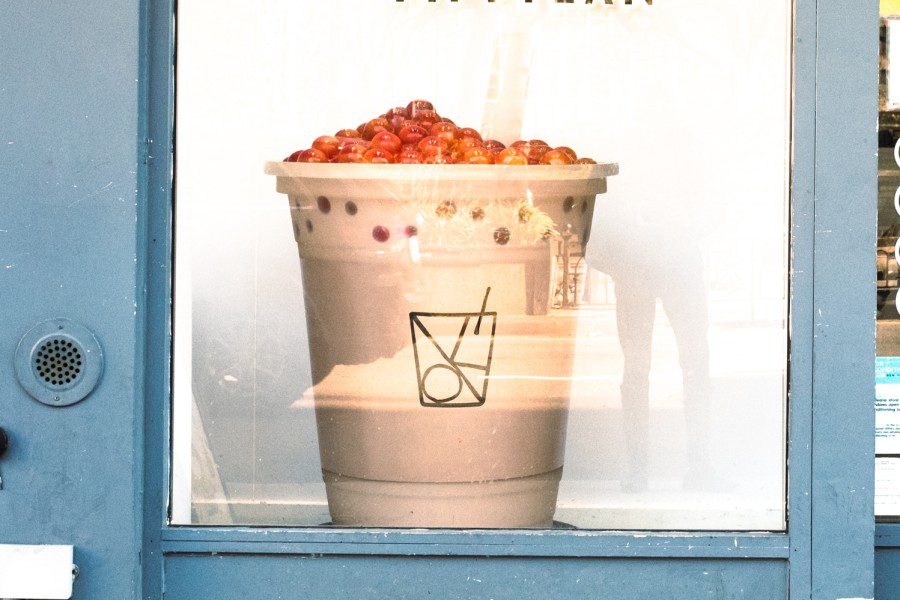The art of milk tea literacy
A guide to bobanatomy, so your milk tea orders can be informed and elegant.
(Samson Tu for WSN)
December 7, 2022
If you’ve ever walked into a boba or bubble tea cafe and felt completely bewildered by the overflowing menu plastered on the wall, you’re not alone. As students living in a city that has a boba shop on nearly every corner, many of us have grown to love the tea-based, tapioca-rich beverage.
But not all of us know how to approach the vast drink menus. If you’re feeling overwhelmed by the decision-making process of ordering boba, then this breakdown of bobanatomy is for you.
The origins of boba are debated, but there is a prevalent version of the tale. In Taiwan during the late ‘80s, someone thought to combine three popular desserts — shaved ice, milk tea and tapioca. This became the default recipe for boba, and from this recipe stemmed hundreds of variations of the drink. Boiled down, a cup of boba is a mixture of a tea base with a milk, made complete with toppings. Even if one of the three elements is missing, the drink is still widely referred to as boba or milk tea.
In accordance with this basic formula, the tea base is the first characteristic of milk tea. The most commonly used base is black tea, which is intense with a malty taste. Black milk tea is rich and caffeinated, serving as a fool-proof base for the beverage. My personal favorite is the green tea base that infuses a more floral, fresh taste to the milk — less heavy than black tea, its mellow and grassy counterpart. Other popular variations include earl grey, which is pleasantly bitter, and oolong, which has a woody flavor.
The next characteristic of a cup of boba is the milk. There are several different variations, including milk powder, fresh milk, yakult or even a non-dairy counterpart. Milk powder is mainly used in milk tea; since milk is hard to preserve, most boba drinks are made from powdered milk, giving them their signature creamy taste. Fresh milk is more refreshing in taste and is rarer within products.
Some boba drinks don’t include any forms of dairy and are usually fruity or more tart in taste. Gong Cha’s Passion Fruit Yogurt Slushie, for example, is a delightful blend of milky and fruity flavor, made complete by the addition of yakult — a Japanese probiotic milk beverage. The alternative’s sweet and slightly sour taste perfectly pairs with fruity drinks. Non-dairy counterparts, like oat and almond milk, make the sweet drink enjoyable for those with lactose intolerances; Lazy Sundaes makes those substitutions for free.
The final defining trait is toppings. The term “boba” itself stems from the Chinese name for tapioca pearls, 波霸(bō bà). Apart from tapioca, however, there is a wide assortment of toppings that serve to complement different drink types. Something more milky and rich, like pudding, pairs better with dairy drinks, while something lighter would go well with fruit or tea-only drinks. Herbal and grass jellies are popular refreshing toppings, having slightly bitter tastes which mediate the tea’s sweetness. Coffee and tea jellies’ mild flavors correspond to the two drinks’ respective tastes.
There are also other miscellaneous add-ons and drink varieties. Try milk foam if you wish for a slightly salty cheese cream-based topping to complement the flavor of the tea, or brown sugar drinks if you’re craving something sweeter. If you want a caffeine-free drink, simply choose a product that doesn’t have a tea base. If you need a shortcut, choose a popular formula with your favorite tea-base, milk and toppings. If you want to go avant-garde, customize your own drink from head to toe. Or, do something in between — choose a pre-decided drink formula, and swap whatever you don’t like for something else.
The boba playing field is large, and the possibilities are endless. But, the most important thing to remember is to not be afraid to hesitate for a moment in front of that overwhelming menu. Decipher it. Look for pairings. Ask questions. With these things in mind, your new favorite drink is just around the corner.
Contact Linsey Liao at [email protected].



























































































































































